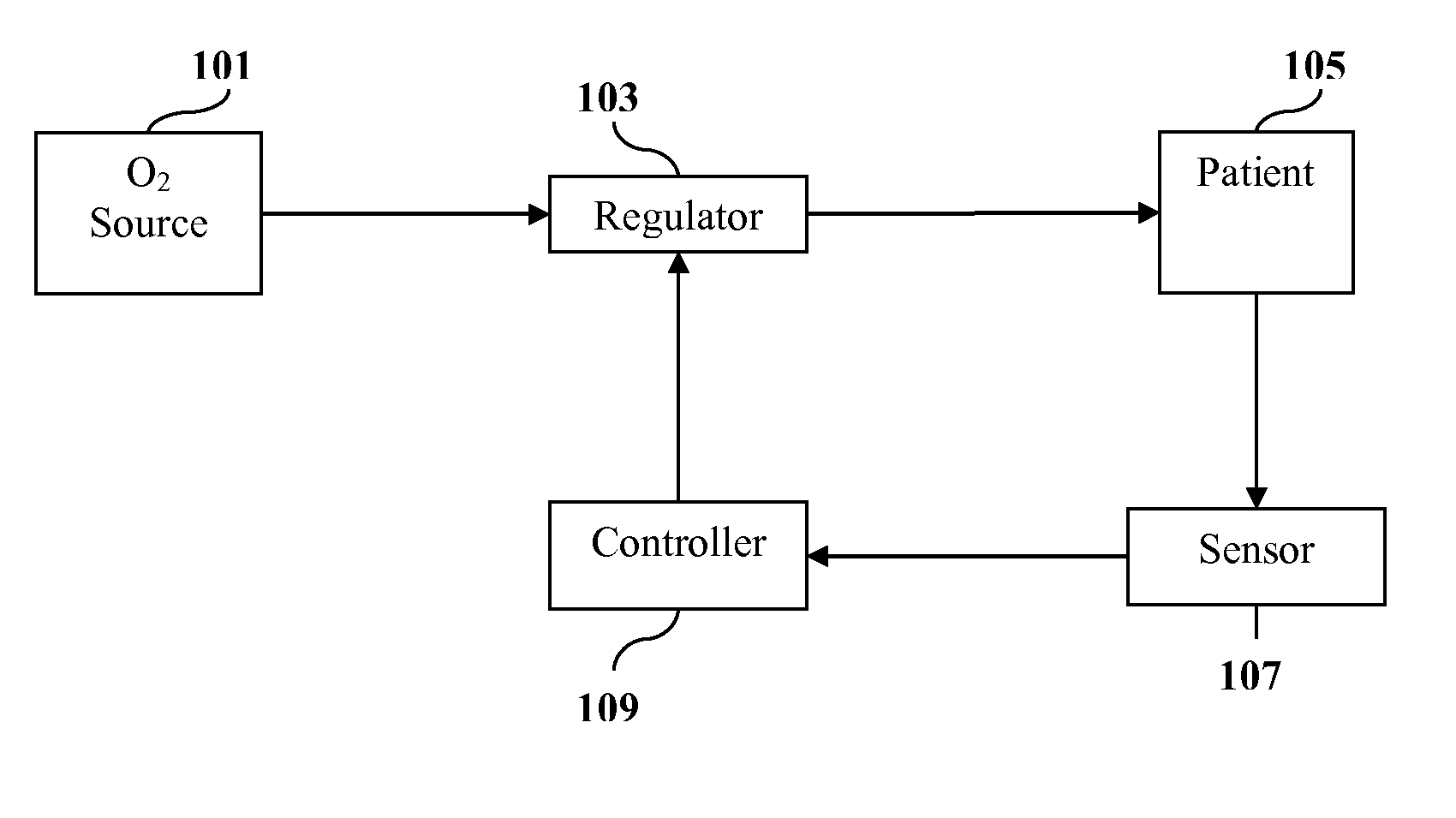Regulated drug delivery system
a drug delivery and regulated technology, applied in the field of regulated drug delivery systems, can solve the problems of increased medical attention, unnecessary patient discomfort, complications, etc., and achieve the effects of saving time and patient satisfaction, rapid and accurate closed loop feedback response, and maintaining system stability
- Summary
- Abstract
- Description
- Claims
- Application Information
AI Technical Summary
Benefits of technology
Problems solved by technology
Method used
Image
Examples
example 1
[0099]The preclinical feasibility of the feedback controller was first demonstrated via a computer model using a closed-loop control algorithm to maintain a predetermined target. The controller was evaluated using a model to replicate the patient oxygen saturation response. This preclinical research was presented at the 2005 European Medical and Biological Engineering Conference (EMBEC).
[0100]The model replicated the patient oxygen saturation response described by the oxyhaemoglobin dissociation curve, which also incorporated a second order transfer function with fixed dead and lag times. Disturbances were input into the patient model to represent patient fluctuations in oxygen saturation. Depending upon the input arterial blood-oxygen saturation, the controller automatically regulates the oxygen flow between the gas source and the patient. Preliminary patient data was obtained from three Chronic Obstructive Pulmonary Disease (COPD) subjects during overnight monitoring with pulse ox...
example 2
[0102]The results presented below regarding FIGS. 4A-D are derived from pulse oximetry monitoring during a standardised incremental shuttle walk exercise test. Shuttle walks are routinely used as simple clinical assessments of a patient's exercise ability. A 10 m shuttle course is outlined along a hospital corridor. Patients are instructed to walk along the course, turning at either end until too tired or breathless to continue. Pulse oximetry data was recorded continuously throughout the study period. The patient recorded oxygen saturation (403) was used as the input for a controller simulation to a linear control algorithm as described in the prior art without sufficient consideration for the time delay in the feedback response. In FIG. 4B, the oscillating behaviour of the linear controller is evident in the oxygen flow rate (407). The undesirable flow control oscillation can also be seen in the resulting saturation (401) of FIG. 4A. When the linear controller cannot maintain the ...
PUM
 Login to View More
Login to View More Abstract
Description
Claims
Application Information
 Login to View More
Login to View More - R&D
- Intellectual Property
- Life Sciences
- Materials
- Tech Scout
- Unparalleled Data Quality
- Higher Quality Content
- 60% Fewer Hallucinations
Browse by: Latest US Patents, China's latest patents, Technical Efficacy Thesaurus, Application Domain, Technology Topic, Popular Technical Reports.
© 2025 PatSnap. All rights reserved.Legal|Privacy policy|Modern Slavery Act Transparency Statement|Sitemap|About US| Contact US: help@patsnap.com



